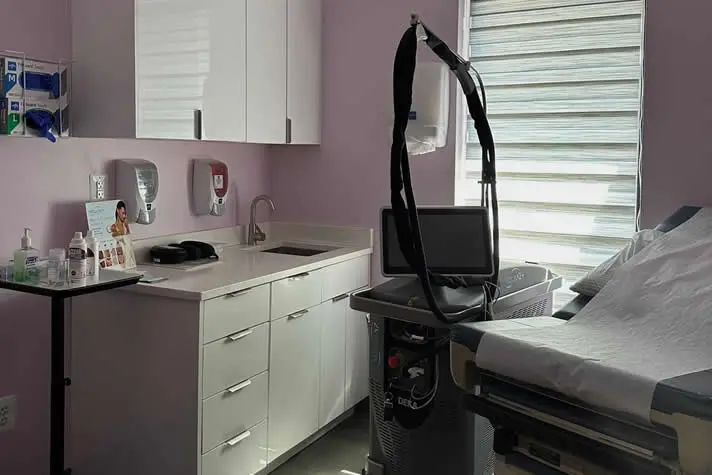What are Pigmented Lesions?
Pigmented lesions are areas of the skin that appear darker due to an excess of melanin. These include freckles, age spots, melasma, and birthmarks. While most pigmented lesions are harmless, some may be cosmetically undesirable or indicate underlying skin conditions. Treatments are available to lighten or remove these lesions for a more even skin tone.

How do Pigmented Lesion Treatments work?
Laser therapy and Intense Pulsed Light (IPL) are commonly used to treat pigmented lesions. These treatments work by targeting melanin in the affected area, breaking down pigment particles, and allowing the body to naturally eliminate them.
Different laser wavelengths are used depending on the type and depth of pigmentation. For example, Q-switched lasers effectively treat deeper pigmentation, while IPL is best suited for surface-level discoloration. Multiple treatment sessions may be needed to achieve optimal results.
Benefits of Pigmented Lesion Treatments
Pigmented lesion treatments offer numerous benefits, including:
- Non-invasive procedure: No surgery or downtime required.
- Targeted treatment: Precision removal of unwanted pigmentation.
- Even skin tone: Reduction of dark spots for a clearer complexion.
- Minimal discomfort: Most patients experience only mild tingling or warmth.
- Quick sessions: Treatments typically take 15-30 minutes.
What to expect during Pigmented Lesion Treatment?
Pigmented lesion treatments are performed in an outpatient setting. Protective eyewear is worn during the procedure to shield the eyes from laser or IPL light.
Most sessions last between 15 to 30 minutes, depending on the size and number of lesions being treated. Some lesions may darken temporarily before fading over time. Mild redness and swelling can occur but usually subside within a few hours to days.
Post-procedure care after Pigmented Lesion Treatment?
-
Proper aftercare ensures the best possible results following treatment. Here are some essential post-procedure guidelines:
- Sun Protection: Use a broad-spectrum sunscreen (SPF 30 or higher) daily to prevent further pigmentation.
- Gentle Skincare: Avoid harsh scrubs and exfoliants for at least a week.
- Moisturizing: Keep the skin hydrated with a gentle, non-irritating moisturizer.
- Avoid Picking: Treated lesions may form a crust before healing—let them fall off naturally.
- Follow-Up Treatments: Some lesions may require multiple sessions for complete removal.
With proper care, pigmented lesion treatments can significantly improve skin appearance and boost confidence.

FAQ About Pigmented Lisions
Are pigmented lesions dangerous?
Most pigmented lesions are benign, but some can be signs of skin conditions like melanoma. It is important to have any new or changing lesions evaluated by a doctor.
How many treatments are needed to remove a pigmented lesion?
The number of treatments varies based on the type and depth of pigmentation. Some lesions lighten after one session, while others may require multiple treatments for full clearance.
Will the treatment cause scarring?
Can pigmented lesions come back after treatment?
While treated lesions generally fade or disappear, new pigmentation may develop over time due to sun exposure, hormonal changes, or aging.
Is pigmented lesion treatment covered by insurance?
Insurance coverage depends on whether the treatment is considered medically necessary or cosmetic. Consult with your provider for specific coverage details.


